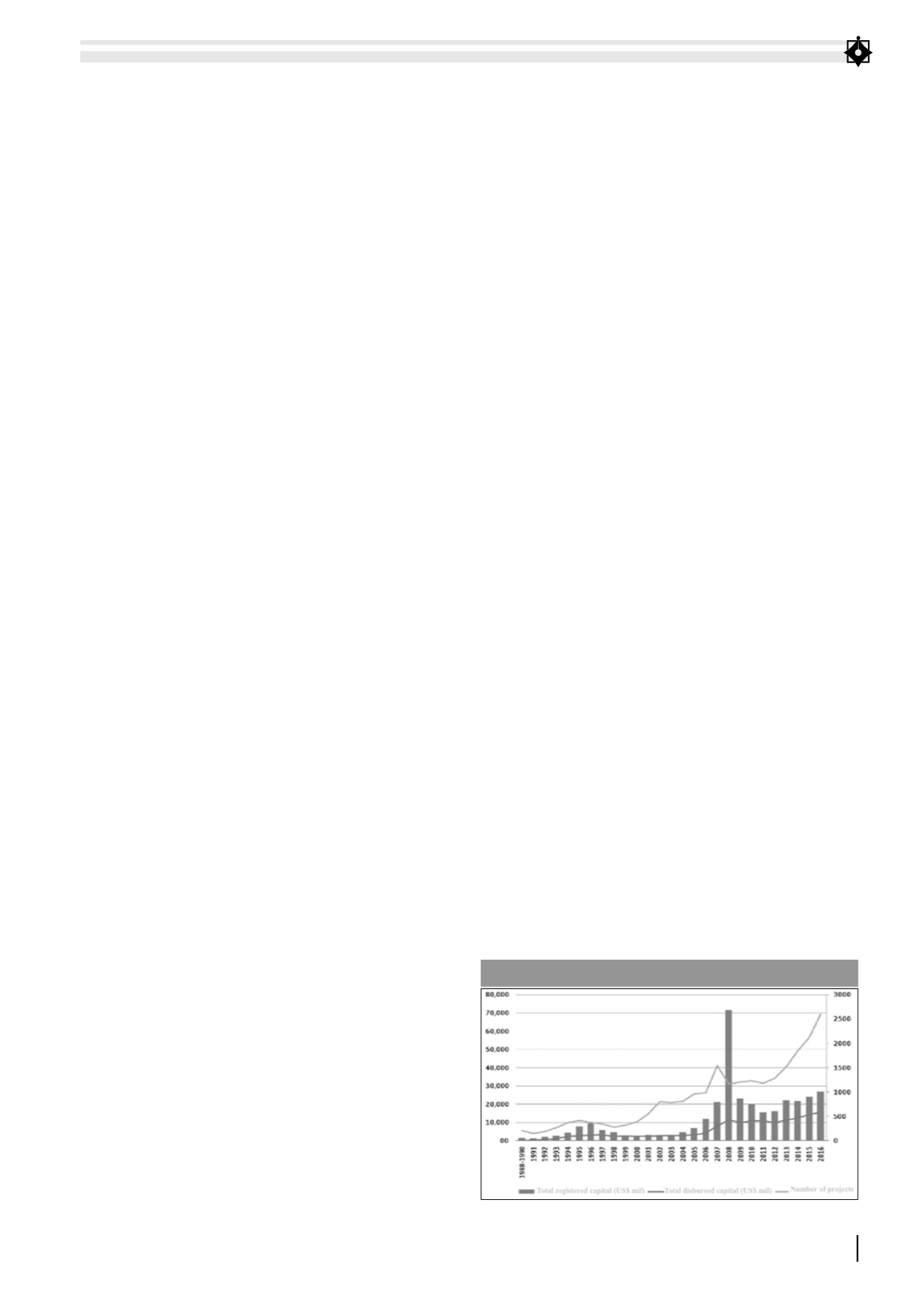
REVIEW
of
FINANCE -
November, 2018
39
registered capital of 2014.
In the period of 1996 – 2000, there was a decline
of FDI in both registered capital and project
scale. FDI capital growth in this period reached
its peak in 1996 with an increase of 21.58% to
the year of 1995. In the next 3 years in the row
(1997-1999), the pace of FDI attraction decreased,
in which 1997 witnessed the biggest reduction of
38.19%. This can be cited as the consequence of
impacts from the financial and monetary crisis
in Asia in 1997. Besides, Vietnam’s investment
climate went through slow improvement in the
context of high competition from other regional
countries like China…
In the period of 2001-2005, FDI inflows to
Vietnam showed signs of recovery with slow
speed. FDI growth speed was the highest in
the year of 2004 and 2005 (respectively 42.94%
abd 50.86%) due to large-scale newly registered
projects such as: Nui Phao Minerals Expoitation
and Processing Joint Venture (total invested
FDI ATTRACTION INVIETNAM
FOR THE PERIODOF 1988–2016
NGUYEN NGOC HOA*
After more than 30 years since the approval of the National Assembly for the Law on Foreign Investment
in 1987, till the end of 2016, foreign direct investment (FDI) inflow to Vietnam has increased and played
an important role in the achievement of Vietnam’s economic development targets. The paper would
provide a close look to the main factors of FDI attraction in Vietnam by invested capital size, economic
sectors, and investment partners… in order to have a bird’s-eye view on FDI attraction process since Law
on Foreign Investment was approved in 1987.
Key words: FDI, investment, economic, business, growth
Received: June 31
st
, 2018
Revised: September 21
st
, 2018
Accepted for publication: October 10
th
, 2018
FDI attraction by invested capital size
Vietnam has many advantages in FDI
attraction such as a stable political system,
abundant natural and human resources, and
fast market growth… From 1988 to 1990 after
the promulgation of the Law on Foreign
Investment in 1987, FDI attraction of Vietnam
saw limited results with only 211 projects
valued USD1,603.5 million of registered capital.
However, from 1991 to 1995, FDI inflow to
Vietnam experienced striking growth with 1,409
projects and USD 18,379.1 million registered
capital. This would be considered a boom period
of FDI in Vietnam. Vietnam’s investment climate
became more attractive to investors beacause of
considerably low investment cost if compared
to that of other regional countries, labour
force with high availability and low price and
unexploited potential markets. External factors
also contributed to this FDI growth, such as FDI
inflow to emerging countries at the beginning
of the 90s and foreign investment inflow to
the communist bloc countries. Vietnam, as a
country in the Southeast Asia region, enjoyed
many benefits from these factors. Its annual
FDI growth in this period was high (at more
than 50% in many years). In the year of 1995,
Vietnam attracted 415 FDI projects with the total
registered capital of USD7,925.2 million and
reached a growth of 85.95% if compared to the
* Email:
FIGURE 1: FDI INFLOWS INTO VIETNAM FROM 1988 TO 2016
Source: GSO


